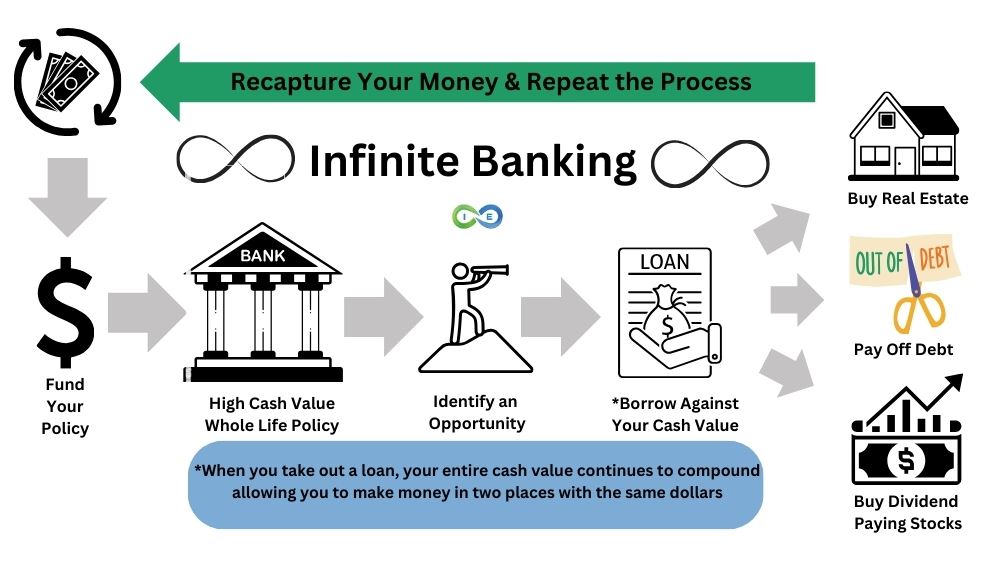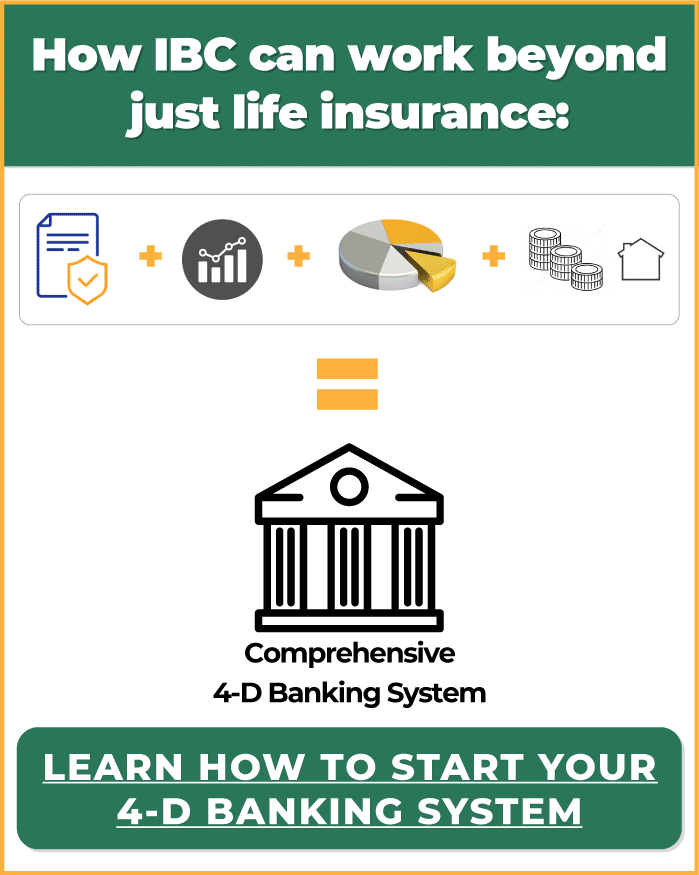All Categories
Featured
Table of Contents
Okay, to be reasonable you're truly "banking with an insurer" as opposed to "financial on yourself", yet that idea is not as easy to sell. Why the term "boundless" banking? The idea is to have your money operating in multiple places simultaneously, instead of in a single location. It's a bit like the concept of buying a residence with cash money, after that borrowing against your house and putting the money to work in one more financial investment.
Some individuals like to speak regarding the "velocity of money", which primarily indicates the very same point. In truth, you are simply maximizing take advantage of, which functions, but, certainly, works both methods. Truthfully, every one of these terms are scams, as you will see listed below. But that does not suggest there is absolutely nothing worthwhile to this concept once you surpass the advertising and marketing.
The whole life insurance policy sector is pestered by excessively costly insurance coverage, massive compensations, unethical sales techniques, reduced prices of return, and inadequately enlightened customers and salesmen. Yet if you wish to "Count on Yourself", you're mosting likely to need to fall to this sector and in fact acquire whole life insurance policy. There is no substitute.
The assurances inherent in this product are critical to its function. You can borrow versus most sorts of money value life insurance, yet you should not "financial institution" with them. As you get a whole life insurance policy policy to "bank" with, keep in mind that this is a completely different section of your monetary plan from the life insurance section.
Acquire a huge fat term life insurance policy policy to do that. As you will certainly see below, your "Infinite Financial" policy actually is not mosting likely to dependably provide this important monetary feature. One more issue with the fact that IB/BOY/LEAP counts, at its core, on an entire life policy is that it can make purchasing a plan problematic for a number of those curious about doing so.
Infinite Banking State Farm
Unsafe hobbies such as SCUBA diving, rock climbing, sky diving, or flying likewise do not mix well with life insurance coverage products. That may function out fine, because the point of the plan is not the death advantage, but keep in mind that acquiring a policy on small children is more expensive than it ought to be since they are normally underwritten at a "standard" price instead than a favored one.

Most plans are structured to do one of 2 things. The payment on an entire life insurance coverage policy is 50-110% of the initial year's premium. Sometimes policies are structured to maximize the fatality benefit for the premiums paid.
The price of return on the policy is very vital. One of the finest methods to make the most of that aspect is to obtain as much cash as feasible into the plan.
The most effective method to improve the rate of return of a plan is to have a fairly little "base policy", and then put even more cash right into it with "paid-up additions". Rather than asking "Exactly how little can I place in to obtain a specific death benefit?" the question comes to be "Just how much can I legally took into the policy?" With more cash money in the plan, there is even more money value left after the expenses of the survivor benefit are paid.
A fringe benefit of a paid-up addition over a regular premium is that the payment price is lower (like 3-4% instead of 50-110%) on paid-up additions than the base plan. The much less you pay in compensation, the higher your rate of return. The rate of return on your money value is still mosting likely to be negative for a while, like all money worth insurance policies.
It is not interest-free. In reality, it might cost as long as 8%. Many insurance coverage firms just use "direct recognition" fundings. With a direct recognition car loan, if you borrow out $50K, the returns price applied to the money worth every year only relates to the $150K left in the plan.
The Nelson Nash Institute
With a non-direct acknowledgment financing, the company still pays the same dividend, whether you have "obtained the cash out" (practically against) the plan or not. Crazy, right? Why would certainly they do that? Who knows? But they do. Commonly this attribute is coupled with some less beneficial aspect of the plan, such as a reduced returns price than you could receive from a policy with straight acknowledgment car loans (infinite banking definition).
The business do not have a resource of magic complimentary money, so what they give up one place in the plan need to be taken from an additional location. If it is taken from a function you care much less around and put right into a feature you care extra about, that is an excellent point for you.
There is another crucial feature, generally called "wash loans". While it is terrific to still have actually dividends paid on cash you have secured of the policy, you still need to pay interest on that loan. If the dividend price is 4% and the loan is charging 8%, you're not exactly coming out ahead.
With a wash car loan, your lending rate of interest coincides as the reward rate on the plan. While you are paying 5% interest on the loan, that interest is entirely countered by the 5% reward on the financing. In that regard, it acts just like you withdrew the money from a bank account.

5%-5% = 0%-0%. Same very same. Hence, you are currently "banking on yourself." Without all three of these factors, this plan just is not mosting likely to work quite possibly for IB/BOY/LEAP. The greatest problem with IB/BOY/LEAP is the individuals pushing it. Almost all of them stand to make money from you purchasing right into this idea.
As a matter of fact, there are numerous insurance representatives discussing IB/BOY/LEAP as an attribute of entire life that are not really offering plans with the required functions to do it! The problem is that those that know the concept best have a huge conflict of passion and typically pump up the advantages of the idea (and the underlying policy).
Bioshock Infinite 3rd Cipher Bank
You should compare borrowing against your plan to withdrawing money from your interest-bearing account. Go back to the start. When you have absolutely nothing. No deposit. No money in financial investments. No money in cash value life insurance policy. You are confronted with a choice. You can put the cash in the bank, you can invest it, or you can purchase an IB/BOY/LEAP policy.
It expands as the account pays rate of interest. You pay taxes on the interest every year. When it comes time to get the watercraft, you withdraw the cash and acquire the boat. Then you can conserve some even more money and placed it back in the banking account to start to make passion once again.
It grows throughout the years with capital gains, dividends, leas, etc. Several of that earnings is strained as you accompany. When it comes time to acquire the boat, you offer the investment and pay tax obligations on your long-term resources gains. You can save some even more cash and purchase some more financial investments.
The cash money value not utilized to pay for insurance coverage and commissions grows throughout the years at the reward rate without tax obligation drag. It starts out with unfavorable returns, yet with any luck by year 5 or two has broken also and is expanding at the reward rate. When you go to purchase the watercraft, you obtain against the plan tax-free.
Nelson Nash Infinite Banking
As you pay it back, the money you paid back begins expanding once again at the returns rate. Those all job rather similarly and you can compare the after-tax rates of return.
They run your credit and provide you a financing. You pay rate of interest on the obtained money to the financial institution until the funding is paid off.
Table of Contents
Latest Posts
Infinite Financial Resources
Start Your Own Personal Bank
Infinite Family Banking
More
Latest Posts
Infinite Financial Resources
Start Your Own Personal Bank
Infinite Family Banking